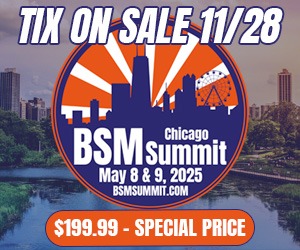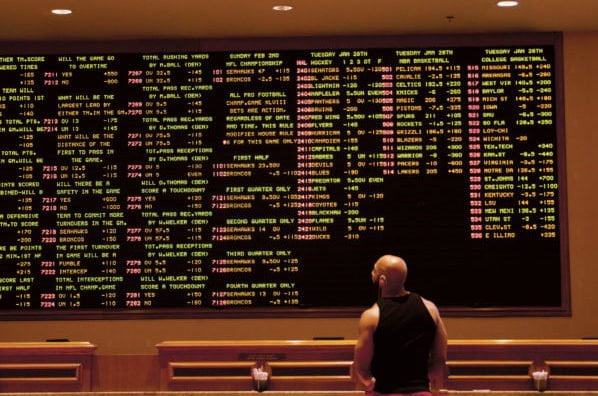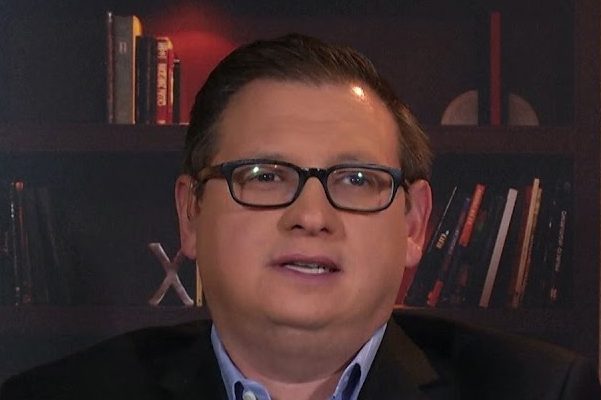Lights, camera, action!
Now there’s a phrase that’s never been synonymous with sports radio. It may never be, but you can’t ignore just how much video is making its way into the world of sports radio. Some stations are constantly streaming on Twitch, while others are using short video clips on social media to promote their content. But if there’s one thing that shows just how much the medium has grown over the years, it’s the ability and willingness to put radio shows on live television.
Every weekday from 3-6 p.m. CST in Baton Rouge, Matt Moscona is in front of a camera while doing a sports radio show. That’s because Cox Sports Television made the commitment to air all three hours of his show After Further Review on its live programing.

There’s obvious advantages to having your radio show on live TV. Most importantly, it means Moscona’s face is in living rooms all across Louisiana each day. That’s priceless advertisement. But even as appealing as that sounds, the logistics of doing a show that works well on both TV and radio can be challenging.
“It does completely change the approach in studio,” said Moscona. “I always have to be conscious of how I look as well as how the visual elements are going to accompany everything I talk about. Our company, when they made the capital investment into building the TV studio, they spent a lot of money on a graphics deal and we basically contracted with the same company that provides graphics for ESPN. When you look at the visual elements that we have, it looks like something you’d see on a major network. That helps tremendously.
“The other part is for every topic I’m prepping, I have to consider what visual elements might accompany it. Sometimes, it’s a tweet we can grab and put on the screen. Sometimes it’s images or videos that we can use. We have a partnership with a local television company, WBRZ, and they offer us their video, as well. But it’s definitely different.”
Though the graphics aspect of the show really sets everything off and presents a unique feature, it requires a lot of time. Not only does Moscona have to prep his entire three-hour show, but he also has to plan which graphics are going to look best with the segments he has planned. Plus, instead of just one radio producer, he also has a video producer that he always has to be in-sync with.
“My video producer manages the graphics and handles everything you see,” said Moscona. “The one component I control, which is interesting and takes some multi-tasking, I have a tablet where the video producer can take my screen and go live with it. Sometimes it’s easier, I’ll pull up a tweet and he can put it up.
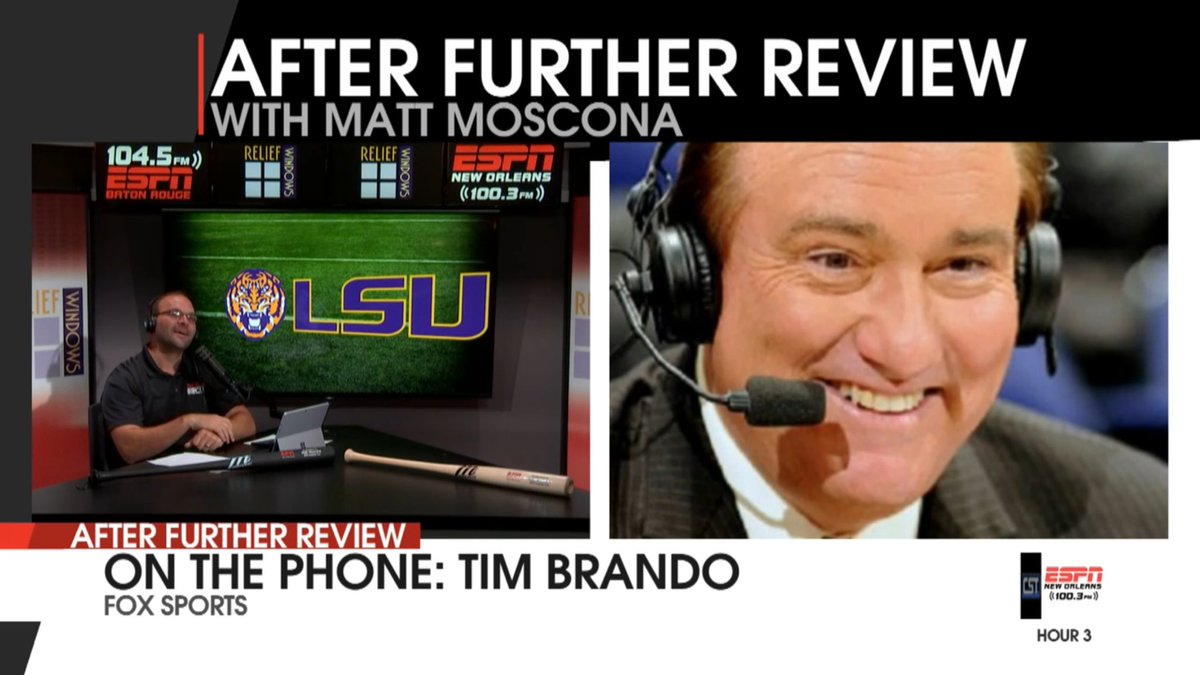
“In some respects, I’m hosting and directing, which is odd. It’s something I’ve gotten better at, but that relationship with me and my video producer, Paul, that’s just something where he has to anticipate what I’m going to do before I do it. Similarly, I have to do the same with him, in terms of anticipating where he’s going to go with the camera.
“The studio is built as an OTT platform and when we launched it, Cox came to us and said they loved it and wanted to carry it. It makes sense, right? That’s 15 hours of programming a week for them that’s live and unique content”
The TV deal with Cox Sports Televisions is an awesome one for Moscona. That much is certain. But how beneficial is it to his station ESPN Baton Rouge?
Sure, some revenue comes in from Cox, but with such a difficult setup, that means Moscona can never be on remote. If the show can’t make money selling live broadcasts, then another source of income has to be created. That requires some out of the box thinking.
“Whenever we built out the TV studio, we cancelled remotes for my show,” said Moscona. “100 percent. So one challenge was to make up the revenue of remote money. The way we counter-balanced that was that we sold title sponsors for every day of the week.
“I have an independent insurance agency that’s a client of mine and I was doing a remote there. They said it was great and they were getting all these calls and walk-ins and I was just sitting in a conference room of their office. They said, man, you almost didn’t even need to be here, the mentions were plenty.
“That gave me a light bulb moment, it was like ding! Essentially, the way we sell our title sponsors is I say the exact same things I would say if I was on remote, but instead, I’ll just be in studio. Then we’ll have panels and graphics on the screen, so they get plenty of run out of that. Everybody has been super receptive to it.”
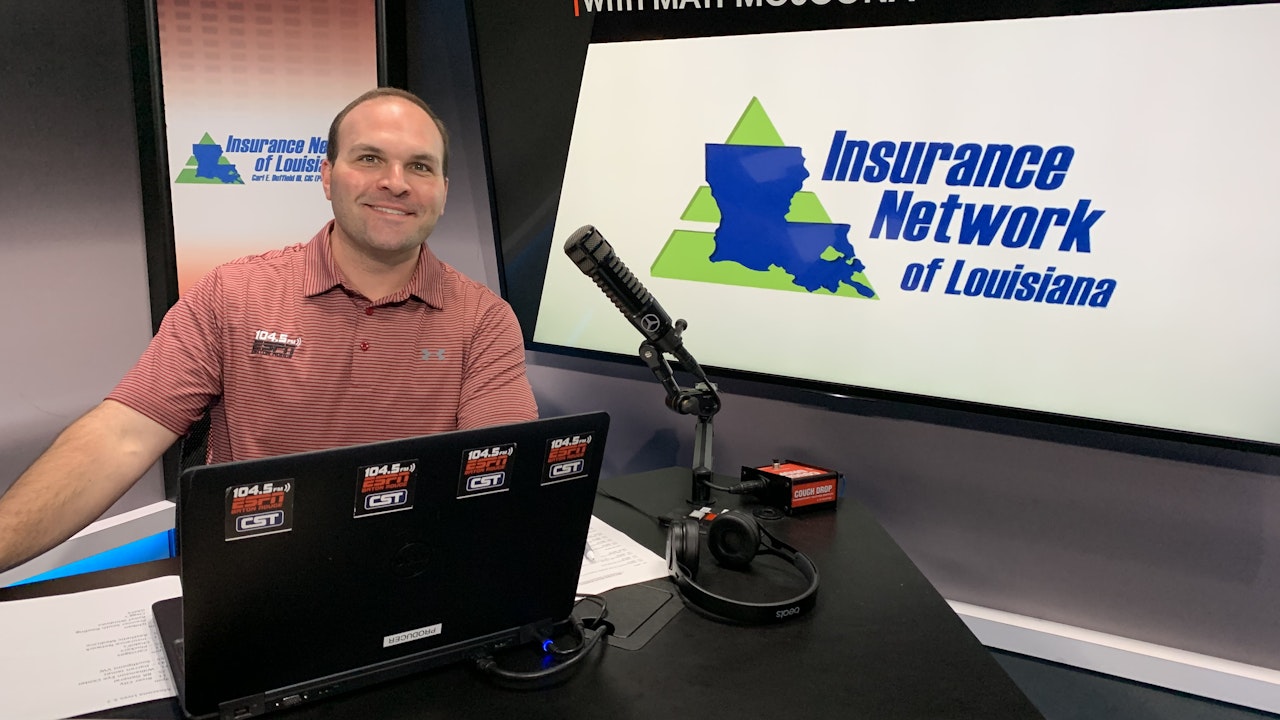
Granted, it’s not impossible to take After Further Review out of the studio, but it’s really difficult and only been done once. It was to cover an event that almost seems mandatory to attend if you’re any kind of sports media member in the Southeast.
“Last year at SEC Media Days was the first time we took the show on the road,” said Moscona. “So I had an on-site video producer that was handling the cameras and switching. Essentially, we shot that feed back to Baton Rouge where I had a video producer in studio that handled the graphics and all the other elements. It was a pretty significant undertaking, and the fact that only two people were handling it is equal parts crazy and impressive. We pulled it off and the plan is to do it again this year.”
So think of yourself, as a show host, with a camera in your face for the entire show. Would you be entertaining to a television audience? How would you supplement those viewers instead of just sitting behind the microphone and talking for three hours? Just like there’s an entertainment aspect on radio, there’s certainly one on TV. Moscona has to find a way to make it entertaining for everyone on both formats.
“Because I have a live feed, I know what shots are going out and I know when I’m on and how to address the camera,” said Moscona. “Admittedly, I try to be a bit more theatrical with my movements so it’s not me just standing still. I talk with my hands a lot anyway, but I just try to make sure that I’m being even more descriptive with my motions.
“Honestly, I think so much of that is having a great video producer who understands how to keep a radio show on television and how to keep it moving. We’re not re-inventing the wheel, there’s plenty of radio shows on TV, but I don’t do anything differently, as far as, how I approach a topic. I always believe that if you’re not passionate about the topic, why would you expect your audience to care? That’s something that’s always in the back of my mind.”
Interviews sound so much better when both parties are in the same room. I don’t think anyone would fight me on that. If not all, just about every single guest Colin Cowherd has is in-studio. That’s the power of Fox Sports Radio and being in Los Angeles, but it only elevates the quality of the show.
Having an in-studio guest plays so much better on TV, but obviously, it’s not always feasible. Though Moscona would love all his guests to be sitting across the table from him, he knows the logistics don’t always work.

“I would love to have every guest in studio,” said Moscona. “You can have a much more personable conversation with somebody face-to-face when you can read body language and non-verbal cues. It’s much easier to carry more natural sounding conversation as opposed to a question-answer, question-answer format. But the reality is just logistics, a lot of the guests I have on are either aren’t in Baton Rouge or can’t make it in the studio that afternoon. Probably 90 percent of our guests are on the phone, but I would welcome any guest to come in studio.”
Tyler McComas is a columnist for BSM and a sports radio talk show host in Norman, OK where he hosts afternoon drive for SportsTalk 1400. You can find him on Twitter @Tyler_McComas or you can email him at TylerMcComas08@yahoo.com.




